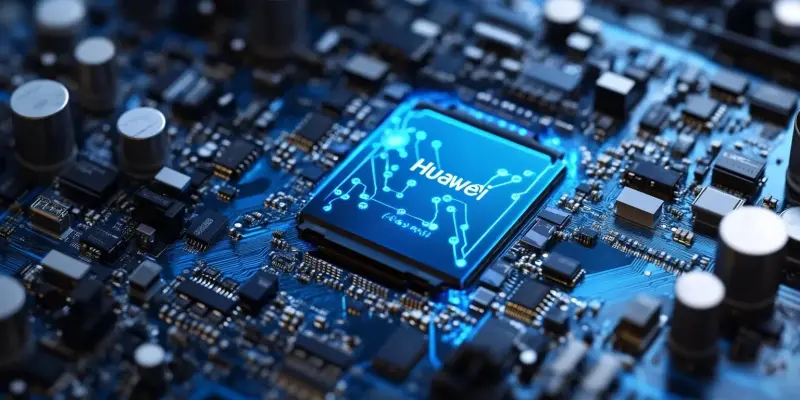The debut of Huawei’s Ascend 910C, China’s leading AI chip, signals a significant leap for the Chinese AI industry, designed to rival NVIDIA’s #00 chip. Featuring a 7nm process technology blend from TSMC and SMIC, the Ascend 910C is expected to offer performance capabilities of up to 800 TFLOP/s at FP16 and a 3.2 TB/s memory bandwidth, nearing what the #00 provides. This strategic release highlights China’s growing capabilities in high-performance computing, responding to the surging demands of AI models like DeepSeek’s R1. While this marks substantial progress for Huawei, the crucial question remains: can Ascend 910C truly stand up to NVIDIA’s dominance in the AI chip market?
Technological Advancements and Production Capabilities
Huawei’s latest endeavor employs a traditional architecture by connecting two Ascend 910B chips using organic substrates, aiming for an impressive cumulative performance and memory bandwidth. SMIC’s 7nm manufacturing success has been pivotal, allowing Huawei to maintain an ambitious production schedule. Expected to produce 50,000 wafers monthly, SMIC’s output will significantly support Huawei’s aspirations to ship millions of AI chips. This production scale underscores a strategic effort to mitigate reliance on foreign technologies, aligning with broader national goals to enhance tech self-sufficiency. Despite these advancements, Huawei still lags behind global frontrunners like NVIDIA in terms of sheer computing power by a substantial margin. Nevertheless, companies like DeepSeek have shown innovative ways to optimize lower computing power, highlighting the potential within China to maximize existing resources.
Market Position and Competitive Edge
Although Huawei’s latest chip showcases significant specs, NVIDIA’s established position in the global AI chip market presents formidable competition. NVIDIA’s chips have become the gold standard in AI, enjoying widespread adoption due to their unparalleled performance and reliability. Ascend 910C’s arrival indicates Huawei’s ambition to close this gap and enhance its market share. However, catching up to NVIDIA’s global footprint and its vast edge in research, development, and technological innovation remains a colossal challenge. The Ascend 910C’s combination of local innovations and strategic collaborations reflects a growing confidence within China’s expanding tech landscape. This bold move not only aims to compete domestically but also seeks to establish presence internationally, albeit in a highly competitive and rapidly evolving field.
Future Considerations and Industry Implications
Huawei’s launch of the Ascend 910C, a top-tier AI chip in China, marks a significant advancement for the country’s AI sector. Developed to compete with NVIDIA’s #00 chip, the Ascend 910C incorporates a 7nm process technology from TSMC and SMIC. It aims to deliver a performance capacity of up to 800 TFLOP/s at FP16 and a memory bandwidth of 3.2 TB/s, closely aligning with the specs of the #00. This strategic move underscores China’s expanding proficiency in high-performance computing, in response to the rising demands from intricate AI models like DeepSeek’s R1. While this signals a major milestone for Huawei, the key question is whether the Ascend 910C can genuinely challenge NVIDIA’s stronghold in the AI chip industry. The success of this chip could potentially reshape the competitive landscape, opening new avenues for innovation and application in the global AI market. However, only time will reveal whether Huawei can match or surpass NVIDIA’s established dominance.

